Watershed Moments
Academic Program


The Master In Strategic Design in Complexity is a one-year program at ELISAVA School of Design and Engineering in Barcelona Spain.
Each year, we as faculty select a theme and topic to kick off the students’ first project. This initial brief serves as a hands-on introduction to applied learning, giving students the opportunity to engage directly with real-world challenges.
We choose topics that are timely, locally relevant, and accessible. Since we're based in Barcelona, this often means focusing on issues that are unfolding right here in the city and surrounding region. This local lens helps students connect with their new environment – engaging with people, visiting nearby places, and testing ideas on the ground.
At the same time, the project gives us, as faculty and as an institution, a chance to deepen our understanding of the complex social and environmental challenges we care about. It also helps us build relationships, networks, and collaborations that can last beyond the rhythm of the academic year.
This year, we continued and evolved a line of work we began with last year’s cohort (2023–2024), focusing on the drought challenges facing Barcelona and the region, in particular as they relate to agricultural practices.
From October 2024 - February 2025 the students completed their first studio project in response to the brief titled: Watershed Moments: Reimagining Agriculture and Resilience in Times of Drought.
Below is a description of the brief, the studio course, and the final student outcomes.
Each year, we as faculty select a theme and topic to kick off the students’ first project. This initial brief serves as a hands-on introduction to applied learning, giving students the opportunity to engage directly with real-world challenges.
We choose topics that are timely, locally relevant, and accessible. Since we're based in Barcelona, this often means focusing on issues that are unfolding right here in the city and surrounding region. This local lens helps students connect with their new environment – engaging with people, visiting nearby places, and testing ideas on the ground.
At the same time, the project gives us, as faculty and as an institution, a chance to deepen our understanding of the complex social and environmental challenges we care about. It also helps us build relationships, networks, and collaborations that can last beyond the rhythm of the academic year.
This year, we continued and evolved a line of work we began with last year’s cohort (2023–2024), focusing on the drought challenges facing Barcelona and the region, in particular as they relate to agricultural practices.
From October 2024 - February 2025 the students completed their first studio project in response to the brief titled: Watershed Moments: Reimagining Agriculture and Resilience in Times of Drought.
Below is a description of the brief, the studio course, and the final student outcomes.
Studio Brief
January 2024
You are strolling through the streets of Barcelona, when you encounter signs scattered throughout the city, carrying urgent messages about water. These signs are part of a widespread campaign to reduce consumption, announcing measures such as the complete cessation of watering public gardens. Others, hanging from lampposts and plastered across the metro, bear slogans like "Water doesn’t fall from the sky," a stark reminder of the region’s severe drought. These efforts form part of Barcelona’s response to an escalating water crisis.
![]()
![]()
A sign outside of a park in Barcelona notifying residents that the city will not be watering the parks or gardens due to the drought situation potentially saving 50% of potable water. Source: Toban Shadlyn / Barcelona Drought Campaigns in Barcelona Metro Station “Water Doesn’t Fall From the Sky”. Source: Toban Shadlyn, December 12 2023.
February 1, 2024
The government of Catalonia officially declares a drought emergency after more than 1,000 days without adequate rainfall, and as water reserves plummet to less than 16%. This declaration triggers emergency protocols affecting over 6 million residents, including daily water restrictions, the suspension of irrigation in public spaces, the shutting down of fountains, and the closure of beachside showers. Beyond the city, small towns and villages faced more extreme realities. In some rural areas, wells ran dry, forcing residents to trek long distances to access natural springs or drive to neighboring towns to purchase bottled water (Fast Company). The agricultural sector, too, bore the burden, with farmers required to halve their water usage for crops and livestock or face fines (The Guardian).
![]()
The Sau Reservoir, which supplies water to Barcelona sitting at less than 16% full. Source: The Independent, March 2023.
In the face of these new and sobering realities, the region reacted. Media attention intensified, the Spanish government announced increased funding for water management initiatives, and local authorities called for innovative proposals to address the crisis. Restrictions persisted, and even bold measures such as importing water by ship were considered. Uncertainty loomed—no one knew when the rains would return, how much relief they would bring, or how long this precarious state would last.
May 13 2024
The Catalonian Government announces an end to the drought emergency. Reservoirs return to levels of 25%+, the immediate threat of a ‘day zero’ averted. Barcelona breathes a sigh of relief – albeit temporarily. This period of emergency state highlights the profound urgency of reorienting our relationship with water. But the question remains—how do we move forward? In what ways must we adapt, rebuild for resiliency rather than reverting to a vulnerable status quo? And towards what kind of futures to ensure water security in a world where scarcity may become the norm?
![]()
Map of Catalonia representing the drought state by municipality. April 3, Catalan News.
You are strolling through the streets of Barcelona, when you encounter signs scattered throughout the city, carrying urgent messages about water. These signs are part of a widespread campaign to reduce consumption, announcing measures such as the complete cessation of watering public gardens. Others, hanging from lampposts and plastered across the metro, bear slogans like "Water doesn’t fall from the sky," a stark reminder of the region’s severe drought. These efforts form part of Barcelona’s response to an escalating water crisis.

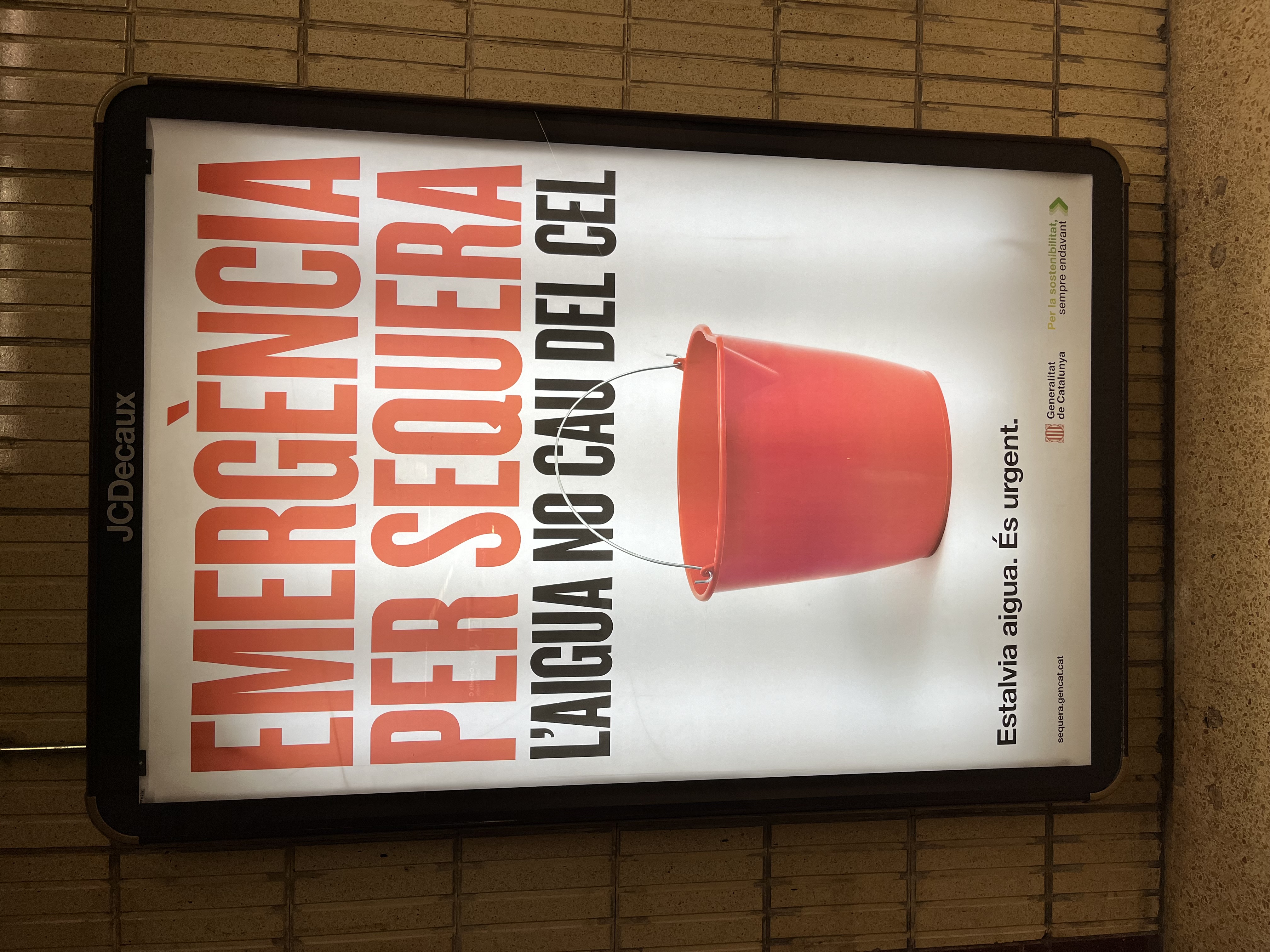
A sign outside of a park in Barcelona notifying residents that the city will not be watering the parks or gardens due to the drought situation potentially saving 50% of potable water. Source: Toban Shadlyn / Barcelona Drought Campaigns in Barcelona Metro Station “Water Doesn’t Fall From the Sky”. Source: Toban Shadlyn, December 12 2023.
February 1, 2024
The government of Catalonia officially declares a drought emergency after more than 1,000 days without adequate rainfall, and as water reserves plummet to less than 16%. This declaration triggers emergency protocols affecting over 6 million residents, including daily water restrictions, the suspension of irrigation in public spaces, the shutting down of fountains, and the closure of beachside showers. Beyond the city, small towns and villages faced more extreme realities. In some rural areas, wells ran dry, forcing residents to trek long distances to access natural springs or drive to neighboring towns to purchase bottled water (Fast Company). The agricultural sector, too, bore the burden, with farmers required to halve their water usage for crops and livestock or face fines (The Guardian).

The Sau Reservoir, which supplies water to Barcelona sitting at less than 16% full. Source: The Independent, March 2023.
In the face of these new and sobering realities, the region reacted. Media attention intensified, the Spanish government announced increased funding for water management initiatives, and local authorities called for innovative proposals to address the crisis. Restrictions persisted, and even bold measures such as importing water by ship were considered. Uncertainty loomed—no one knew when the rains would return, how much relief they would bring, or how long this precarious state would last.
May 13 2024
The Catalonian Government announces an end to the drought emergency. Reservoirs return to levels of 25%+, the immediate threat of a ‘day zero’ averted. Barcelona breathes a sigh of relief – albeit temporarily. This period of emergency state highlights the profound urgency of reorienting our relationship with water. But the question remains—how do we move forward? In what ways must we adapt, rebuild for resiliency rather than reverting to a vulnerable status quo? And towards what kind of futures to ensure water security in a world where scarcity may become the norm?

Map of Catalonia representing the drought state by municipality. April 3, Catalan News.
Studio Focus
Water is vital to nearly every aspect of life, from personal consumption and household use to large-scale industrial applications, such as tourism, data centers, and urban infrastructure. Among the most significant drivers of water consumption is industry, with agriculture standing out as particularly water-intensive—especially in Catalonia.
In Spain, the agricultural sector accounts for ~82.1%* of water use (households use 12.8% and the remaining 5.1% is used for other economic activities (Caixa Bank Research)). As droughts intensify and water availability diminishes, the agrifood sector faces one of its most pressing challenges—rethinking water use.
*exact figures can vary slightly depending on the year, weather conditions, and specific agricultural practices).
Earlier this year, when the government declared a drought emergency, it imposed an 80% reduction in water usage for the agricultural sector. This drastic limitation on irrigation led to widespread crop failures and significantly reduced harvests. As a result, many farmers have been unable to sell their produce. One downstream effect has been a surge in food prices, which have risen by more than 30% over recent years. Protests by farmers in Spain and across Europe, coupled with increasing concerns about sensitive food pricing for residents, have exposed the fragility of our systems, our policies, incentive structures, behaviors, relationships, and needs. The current models we rely on are increasingly at odds with new climate and population realities.
![]()
Spanish farmers block roads across Spain during large demonstrations in Madrid. Translation: “Without the countryside and desire = empty table”. Source: BBC February 2024.
The climate crisis presents a broad array of complex challenges, but our entry point will be water in the context of agriculture, serving as a lens for exploring systemic issues. We will examine the various factors at play, the challenges, the barriers, the gaps, the signals of change, the opportunities, and the possibility of different futures.
Recognizing that water and watersheds transcend human designed boundaries (lines drawn on a map), we will consider a bioregional approach – exploring, understanding, and caring for both the natural and human communities within regions shaped by nature. Our exploration will span large industrial scales, small urban scales, and the areas in between.
However, focusing solely on water in agriculture is still a vast area of study, so you will need to define the scope of your inquiry by setting clear parameters (i.e., building in constraints). You will work in teams of three to explore, reframe, and develop interventions in response to the ongoing climate, social, economic, and ecological challenges. The project will culminate in a final presentation, where you will share your work with a group of external guests, receive feedback, and engage in meaningful discussions.
In Spain, the agricultural sector accounts for ~82.1%* of water use (households use 12.8% and the remaining 5.1% is used for other economic activities (Caixa Bank Research)). As droughts intensify and water availability diminishes, the agrifood sector faces one of its most pressing challenges—rethinking water use.
*exact figures can vary slightly depending on the year, weather conditions, and specific agricultural practices).
Earlier this year, when the government declared a drought emergency, it imposed an 80% reduction in water usage for the agricultural sector. This drastic limitation on irrigation led to widespread crop failures and significantly reduced harvests. As a result, many farmers have been unable to sell their produce. One downstream effect has been a surge in food prices, which have risen by more than 30% over recent years. Protests by farmers in Spain and across Europe, coupled with increasing concerns about sensitive food pricing for residents, have exposed the fragility of our systems, our policies, incentive structures, behaviors, relationships, and needs. The current models we rely on are increasingly at odds with new climate and population realities.

Spanish farmers block roads across Spain during large demonstrations in Madrid. Translation: “Without the countryside and desire = empty table”. Source: BBC February 2024.
The climate crisis presents a broad array of complex challenges, but our entry point will be water in the context of agriculture, serving as a lens for exploring systemic issues. We will examine the various factors at play, the challenges, the barriers, the gaps, the signals of change, the opportunities, and the possibility of different futures.
Recognizing that water and watersheds transcend human designed boundaries (lines drawn on a map), we will consider a bioregional approach – exploring, understanding, and caring for both the natural and human communities within regions shaped by nature. Our exploration will span large industrial scales, small urban scales, and the areas in between.
However, focusing solely on water in agriculture is still a vast area of study, so you will need to define the scope of your inquiry by setting clear parameters (i.e., building in constraints). You will work in teams of three to explore, reframe, and develop interventions in response to the ongoing climate, social, economic, and ecological challenges. The project will culminate in a final presentation, where you will share your work with a group of external guests, receive feedback, and engage in meaningful discussions.
Starting Considerations
What are the histories of water in Barcelona? In Catalonia, in Spain?
How has the region managed and/or designed water throughout the centuries?
How is water managed today across the region(s)?
What types of water systems are controlled, owned, operated and by whom? Where? When? And How?
What kinds of new or old institutions exist that govern water decision making?
How does decision making around challenges related to water happen?
What is drought?
How is water used in agricultural practices? (traditional and new)
What are the current challenges with water use in agriculture?
In large scale farming and in smaller scale urban farming?
What is at stake with our current agricultural practices? (ie.lack of food, lack of know-how)
What is the relationship between large-scale agricultural farming and small agricultural practices in urban contexts?
What can we learn from these models?
What surrounds or is connected to different aspects of water in agricultural use?
How has the region managed and/or designed water throughout the centuries?
How is water managed today across the region(s)?
What types of water systems are controlled, owned, operated and by whom? Where? When? And How?
What kinds of new or old institutions exist that govern water decision making?
How does decision making around challenges related to water happen?
What is drought?
How is water used in agricultural practices? (traditional and new)
What are the current challenges with water use in agriculture?
In large scale farming and in smaller scale urban farming?
What is at stake with our current agricultural practices? (ie.lack of food, lack of know-how)
What is the relationship between large-scale agricultural farming and small agricultural practices in urban contexts?
What can we learn from these models?
What surrounds or is connected to different aspects of water in agricultural use?
What objects, services, technology, places, systems, economics, rules or policies exist to support it, maintain it, operate it, communicate about it?
How much space does it require, does it take up? Does it require more, less?
What are the repercussions or opportunities of it expanding or diminishing?
What is the effect of that on street scale, neighborhood scale, city scale, and regional scales?
How does time play a role in the context of agriculture?
Are there clues or hints today that indicate how these models might evolve in the next 10, 20, 30 years?
What should stay stable? What needs to be amplified? What needs to change?
How might we collaborate with, and enable, our living world to co-create?
How might we ensure the built environment is created to last, adapt, and thrive as part of nature?
How might we work with people and place to create shared ownership, decision-making around the challenges we face and enhance collective responses to them?
What other factors do we need to consider? (pleasure, comfort, access…)
How much space does it require, does it take up? Does it require more, less?
What are the repercussions or opportunities of it expanding or diminishing?
What is the effect of that on street scale, neighborhood scale, city scale, and regional scales?
How does time play a role in the context of agriculture?
Are there clues or hints today that indicate how these models might evolve in the next 10, 20, 30 years?
What should stay stable? What needs to be amplified? What needs to change?
How might we collaborate with, and enable, our living world to co-create?
How might we ensure the built environment is created to last, adapt, and thrive as part of nature?
How might we work with people and place to create shared ownership, decision-making around the challenges we face and enhance collective responses to them?
What other factors do we need to consider? (pleasure, comfort, access…)

Site Visits
In October and November, we organized a series of site visits within the city of Barcelona and to agricultural areas in the Girona region to familiarize ourselves with the topic.
- Pati Llimona Civic Center
- Hivernacle del Parc de la Ciutadella
- Bioma Community Garden
- Can Font Farm & Regen Academy
Our city exploration in Barcelona was led by Kris De Decker (Low Tech Magazine) and Jere Kuzmanic (UPC), who guided us through a series of sites focused on urban design, water management, land use, and local history.
We began at the Pati Llimona Civic Center, where Chris Hepp, gardener, educator, and systems thinker, toured us around the urban planting project – a rooftop garden and experimental lab. This remarkable space features hydroponic and aquaponic systems (complete with crayfish), worm composting, mycelium cultivation, mulching beds, a tropical greenhouse, rainwater harvesting, and a bioconverter. The garden produces an impressive array of fruits, vegetables, herbs, and flowers—from kale and aubergine to passion fruit and succulents. A full-scale prototype of a balcony garden illustrates the potential for replication across the city. Remarkably, ~80% of the infrastructure is made from reclaimed materials found on Barcelona’s streets, and the system is nearly fully water-circular, a living example of creative reuse and closed-loop design.
Next, we visited the Hivernacle del Parc de la Ciutadella, where an exhibition curated by the Municipal Institute of Parks and Gardens offered a historical and forward-looking view of greenhouses and their evolving role in urban ecosystems.
We ended the day at Bioma Community Garden, where volunteer member Luca Vlaskalic welcomed us for a discussion on community-driven urban agriculture and its power to foster social cohesion, local food sovereignty, and ecological awareness in dense city neighborhoods.
We began at the Pati Llimona Civic Center, where Chris Hepp, gardener, educator, and systems thinker, toured us around the urban planting project – a rooftop garden and experimental lab. This remarkable space features hydroponic and aquaponic systems (complete with crayfish), worm composting, mycelium cultivation, mulching beds, a tropical greenhouse, rainwater harvesting, and a bioconverter. The garden produces an impressive array of fruits, vegetables, herbs, and flowers—from kale and aubergine to passion fruit and succulents. A full-scale prototype of a balcony garden illustrates the potential for replication across the city. Remarkably, ~80% of the infrastructure is made from reclaimed materials found on Barcelona’s streets, and the system is nearly fully water-circular, a living example of creative reuse and closed-loop design.
Next, we visited the Hivernacle del Parc de la Ciutadella, where an exhibition curated by the Municipal Institute of Parks and Gardens offered a historical and forward-looking view of greenhouses and their evolving role in urban ecosystems.
We ended the day at Bioma Community Garden, where volunteer member Luca Vlaskalic welcomed us for a discussion on community-driven urban agriculture and its power to foster social cohesion, local food sovereignty, and ecological awareness in dense city neighborhoods.





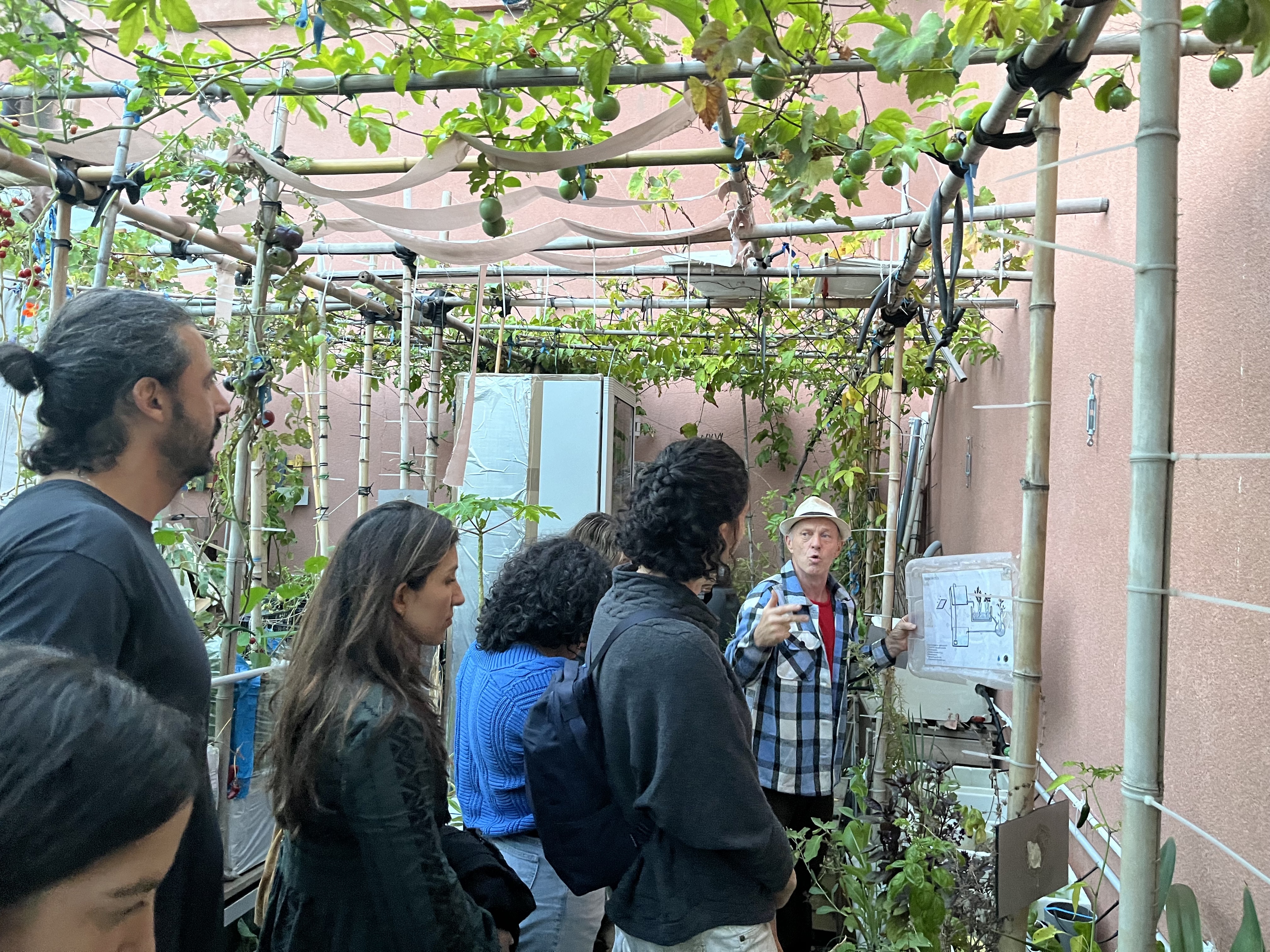

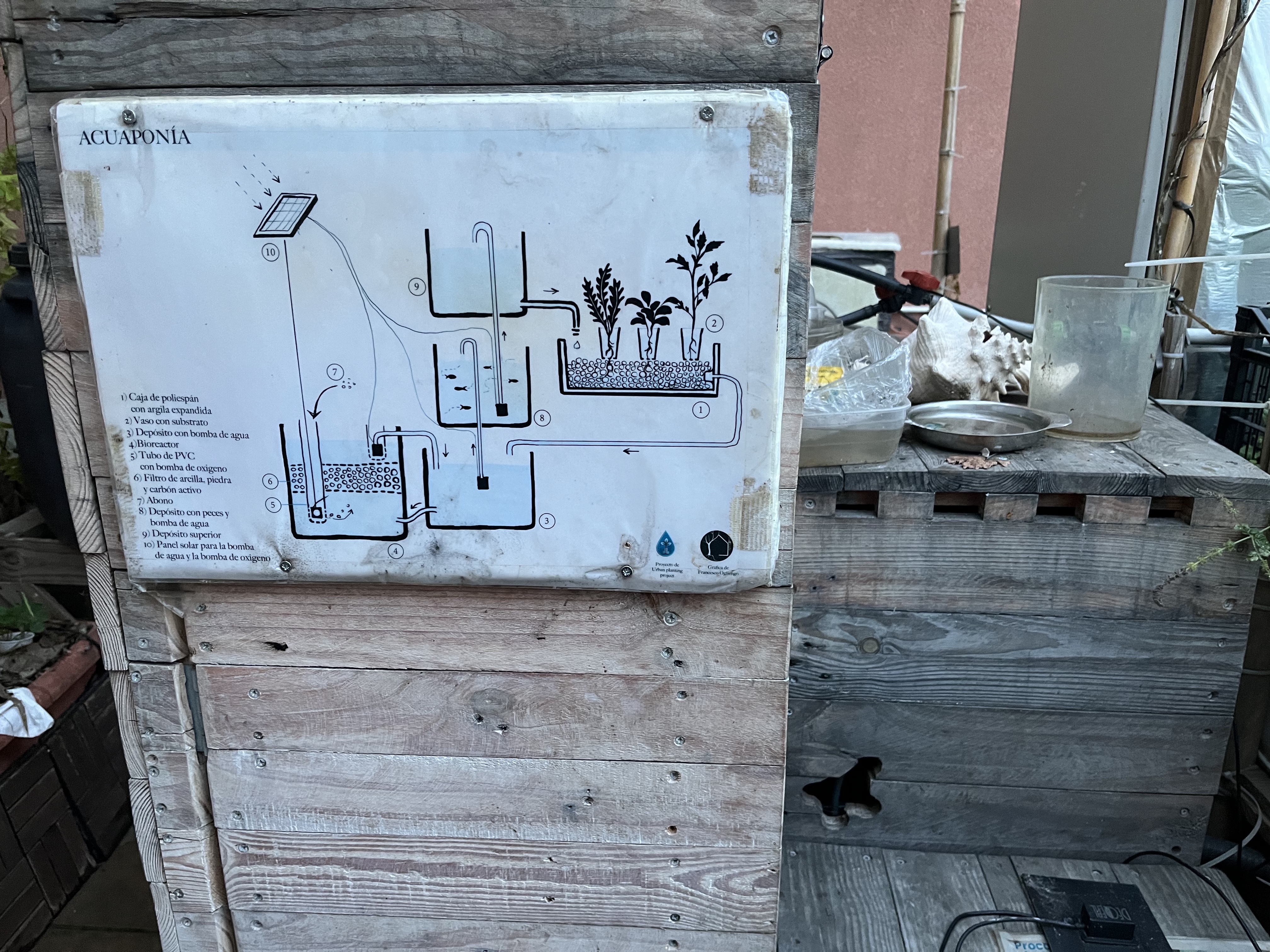
A bus drive north to Girona, we spent the day with Francesc Font and Nuri Madeo, regenerative farmers of Can Font and the founders of Regen Academy, an online school and consultancy dedicated to regenerative agriculture.
We toured the farm and explored the contrast between older, conventional farming tools and the new methods they’ve adopted since transitioning to regenerative practices. Francesc and Nuri shared candid insights into their three-year transition process, including what motivated their decision to shift, the risks they faced, and the outcomes they’ve seen so far. We also discussed the broader context including what types of financial, regulatory, and political support are (or are not) available to regenerative farmers in Spain.
This visit provided a grounded look at the real-world challenges and opportunities of transforming our food systems, not only as a climate solution but as a pathway toward healthier soil, communities, and economies.
We toured the farm and explored the contrast between older, conventional farming tools and the new methods they’ve adopted since transitioning to regenerative practices. Francesc and Nuri shared candid insights into their three-year transition process, including what motivated their decision to shift, the risks they faced, and the outcomes they’ve seen so far. We also discussed the broader context including what types of financial, regulatory, and political support are (or are not) available to regenerative farmers in Spain.
This visit provided a grounded look at the real-world challenges and opportunities of transforming our food systems, not only as a climate solution but as a pathway toward healthier soil, communities, and economies.




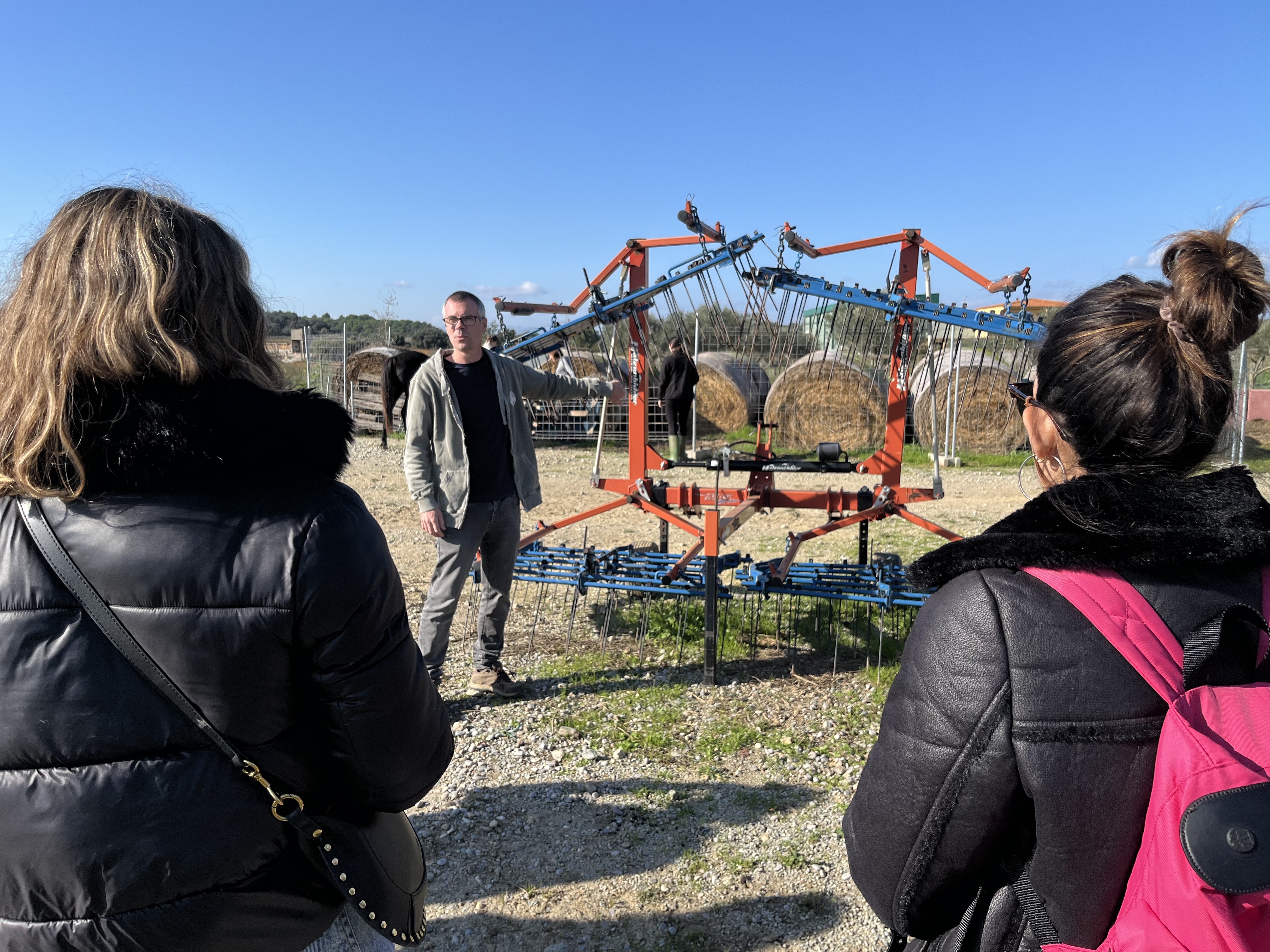
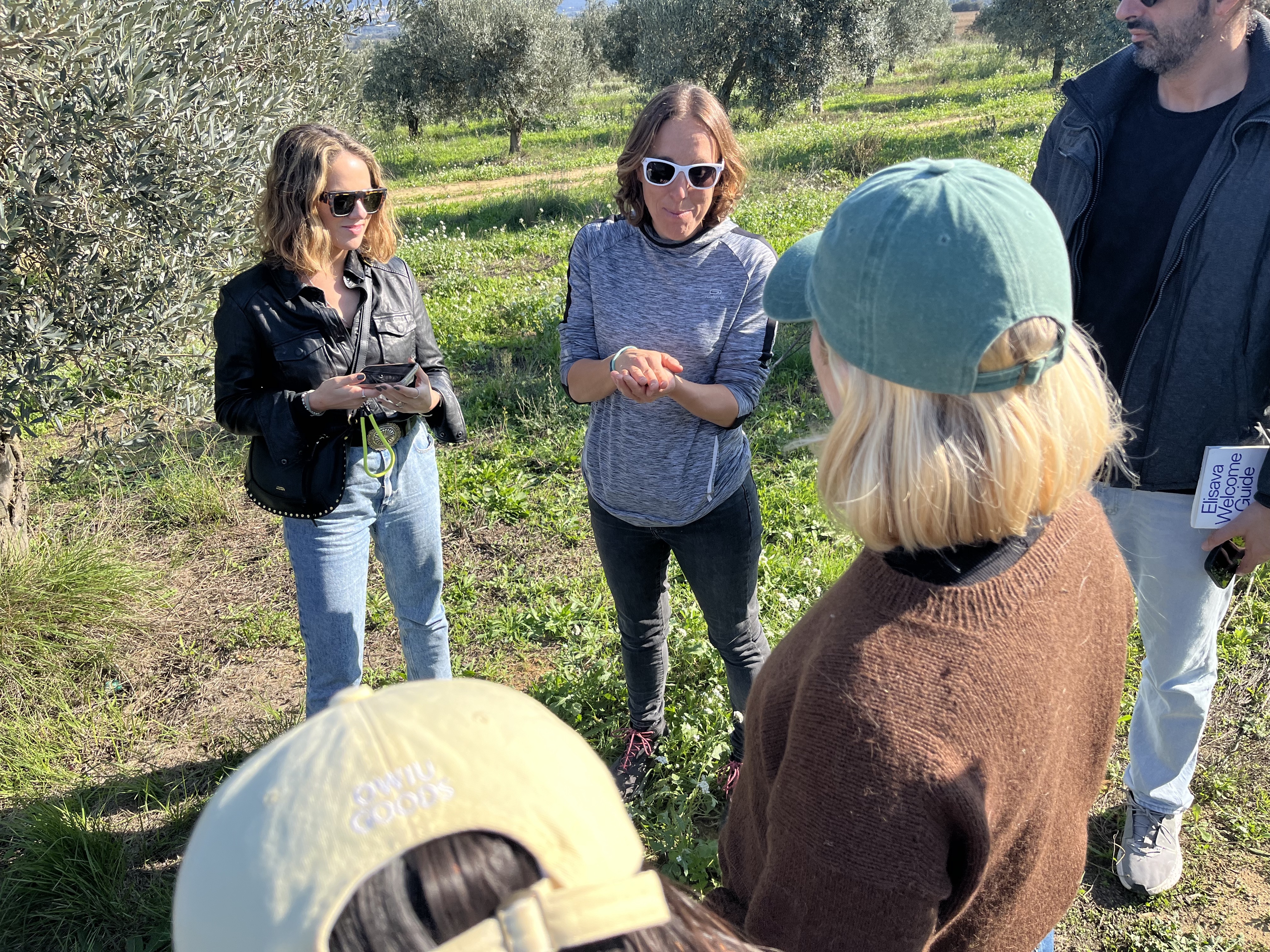

Nava de Tolosa Schoolyard
In February, our students spent an immersive week exploring Madrid’s design ecosystem, engaging with leading practitioners, and visiting place-based collaborative projects. One project we visited was the Nava de Tolosa Schoolyard Redevelopment.
We had the opportunity to meet some of the key minds behind the LIFEPACT project including Itziar Bayón (Ayuntamiento de Madrid), Manuel Alméstar (Universidad Politécnica de Madrid), Manuel Polanco Pérez-Llantada (Basurama Collective), and Alicia Carvajal Rowan (Dark Matter Labs).
The project reimagines public spaces in one of Madrid’s most vulnerable neighbourhoods through collaborative, community-driven interventions. A seemingly simple yet strategic decision–to substitute the schoolyard fences and replace them with trees and natural elements–served as a Trojan horse for sparking conversations and challenging current mental models. While initially controversial, this decision prompted the community to rethink traditional notions of security and reshape the space into one that fosters inclusion, biodiversity, and shared responsibility for the commons.
Already, the projects impact is extending beyond the schoolyard, prompting municipal teams to reconsider how public service tenders are structured and rethink approaches to urban regeneration. In Villaverde, this is fueling a growing movement for transformation, where schoolyards and their surroundings are emerging as the most inclusive, sustainable, and resilient nodes of change. LIFEProgramme
We had the opportunity to meet some of the key minds behind the LIFEPACT project including Itziar Bayón (Ayuntamiento de Madrid), Manuel Alméstar (Universidad Politécnica de Madrid), Manuel Polanco Pérez-Llantada (Basurama Collective), and Alicia Carvajal Rowan (Dark Matter Labs).
The project reimagines public spaces in one of Madrid’s most vulnerable neighbourhoods through collaborative, community-driven interventions. A seemingly simple yet strategic decision–to substitute the schoolyard fences and replace them with trees and natural elements–served as a Trojan horse for sparking conversations and challenging current mental models. While initially controversial, this decision prompted the community to rethink traditional notions of security and reshape the space into one that fosters inclusion, biodiversity, and shared responsibility for the commons.
Already, the projects impact is extending beyond the schoolyard, prompting municipal teams to reconsider how public service tenders are structured and rethink approaches to urban regeneration. In Villaverde, this is fueling a growing movement for transformation, where schoolyards and their surroundings are emerging as the most inclusive, sustainable, and resilient nodes of change. LIFEProgramme

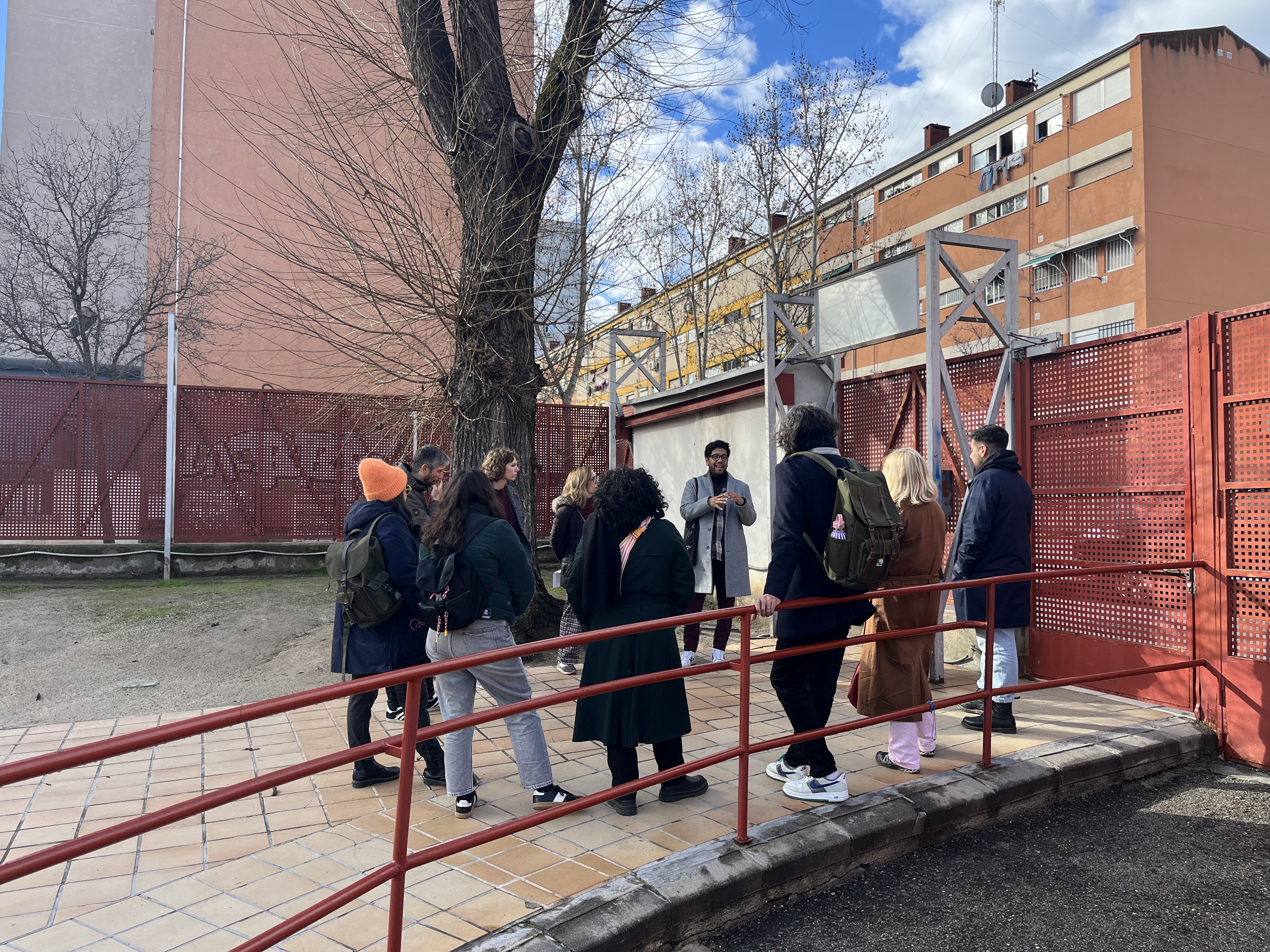


Students Work
Authorship of the work lies with the students.
Terra Barcelona
Agriculture made it possible for cities to emerge, allowing humans to transition from a nomadic lifestyle to settled societies. By producing food instead of searching for it, people could establish permanent communities, leading to population growth, job specialization, and the development of social and economic structures.
Today, the scenario has changed. An unprecedented amount of food is produced thanks to technological advances and the industrialization of agriculture. However, this model has also brought challenges such as environmental impact, food waste, and the unequal distribution of resources. In light of this, it is crucial to rethink our consumption practices to move toward a more sustainable and equitable food system, facilitating decision-making that benefits both the planet and ourselves.
Today, the scenario has changed. An unprecedented amount of food is produced thanks to technological advances and the industrialization of agriculture. However, this model has also brought challenges such as environmental impact, food waste, and the unequal distribution of resources. In light of this, it is crucial to rethink our consumption practices to move toward a more sustainable and equitable food system, facilitating decision-making that benefits both the planet and ourselves.




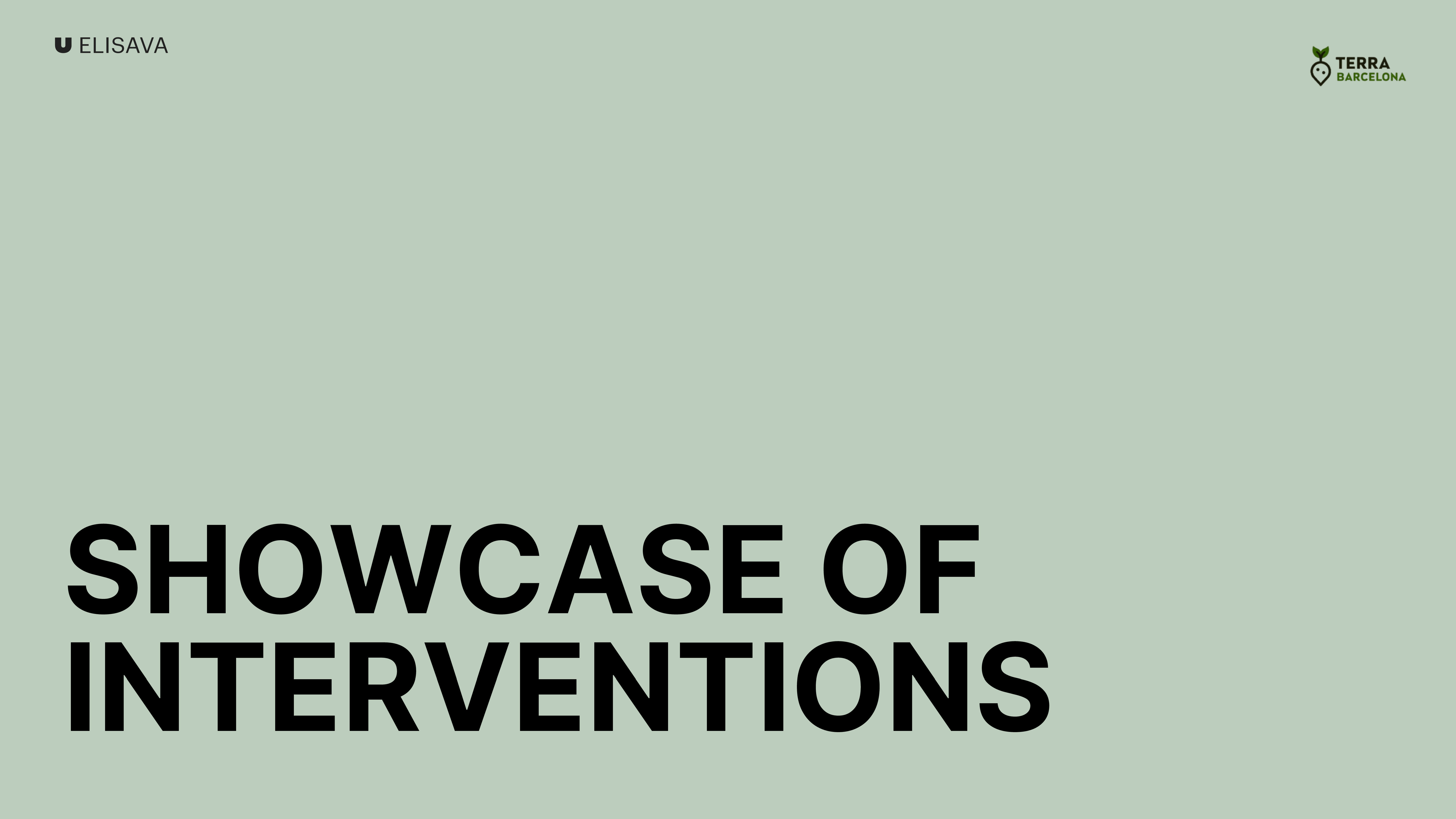
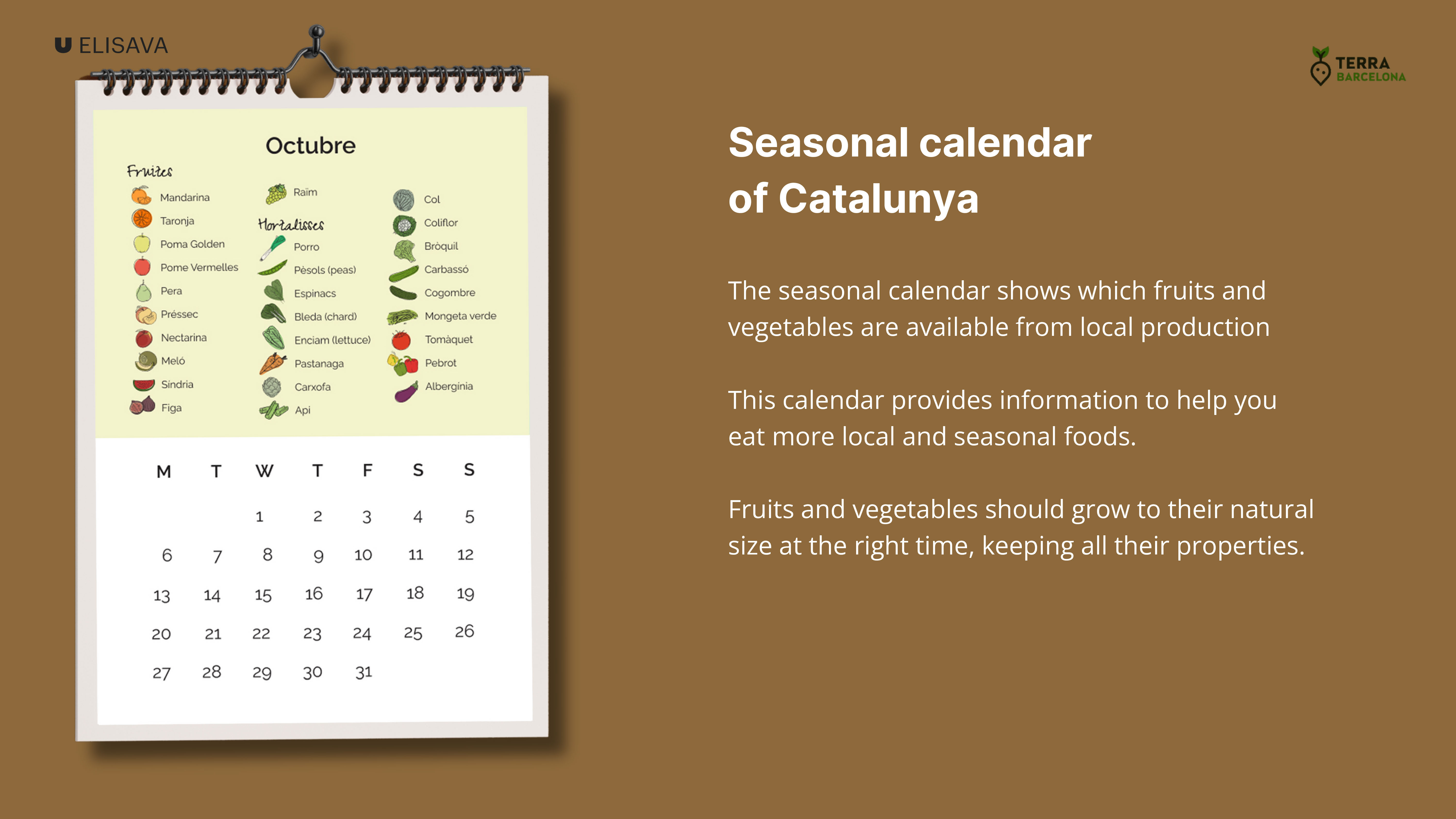

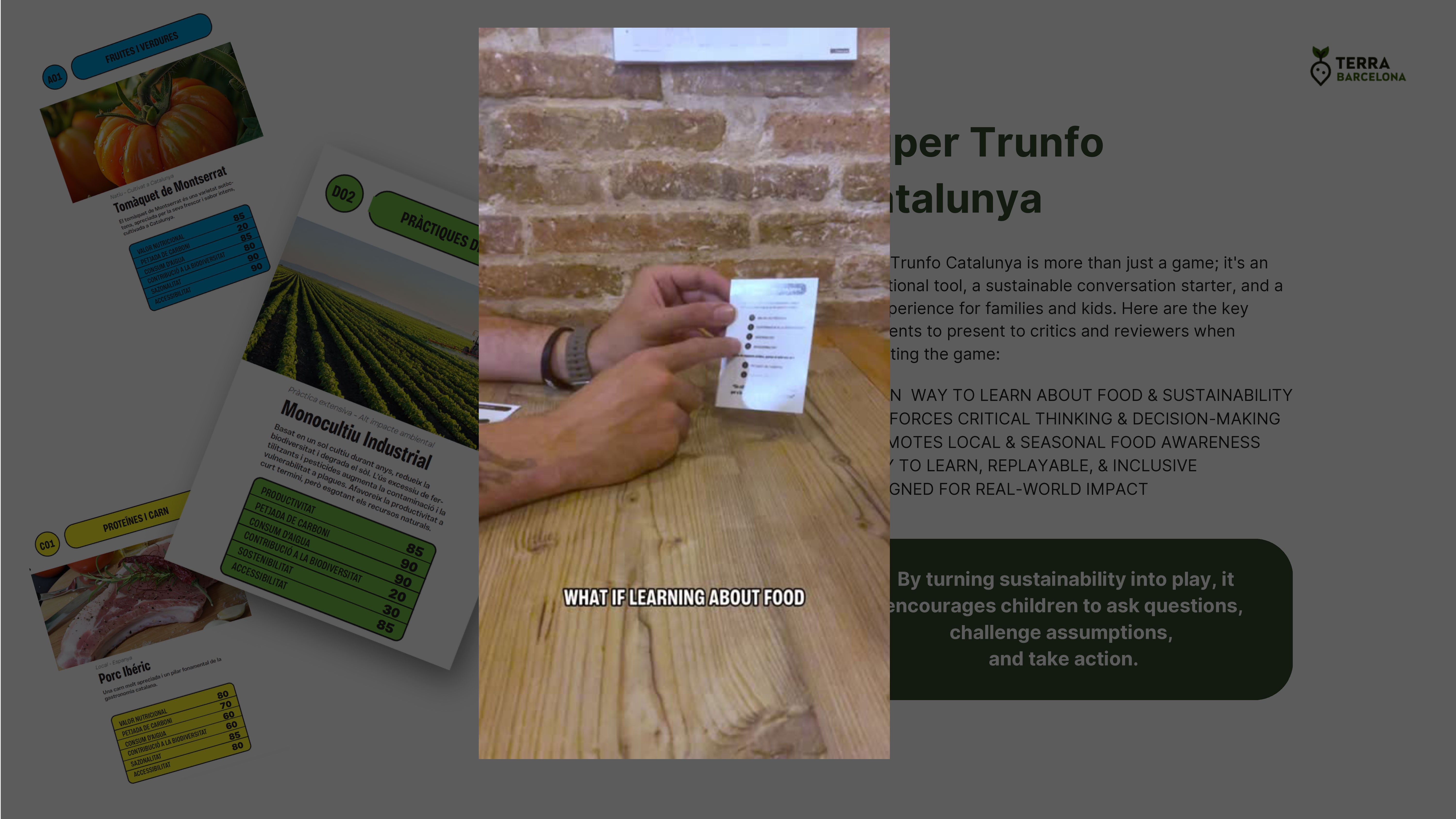

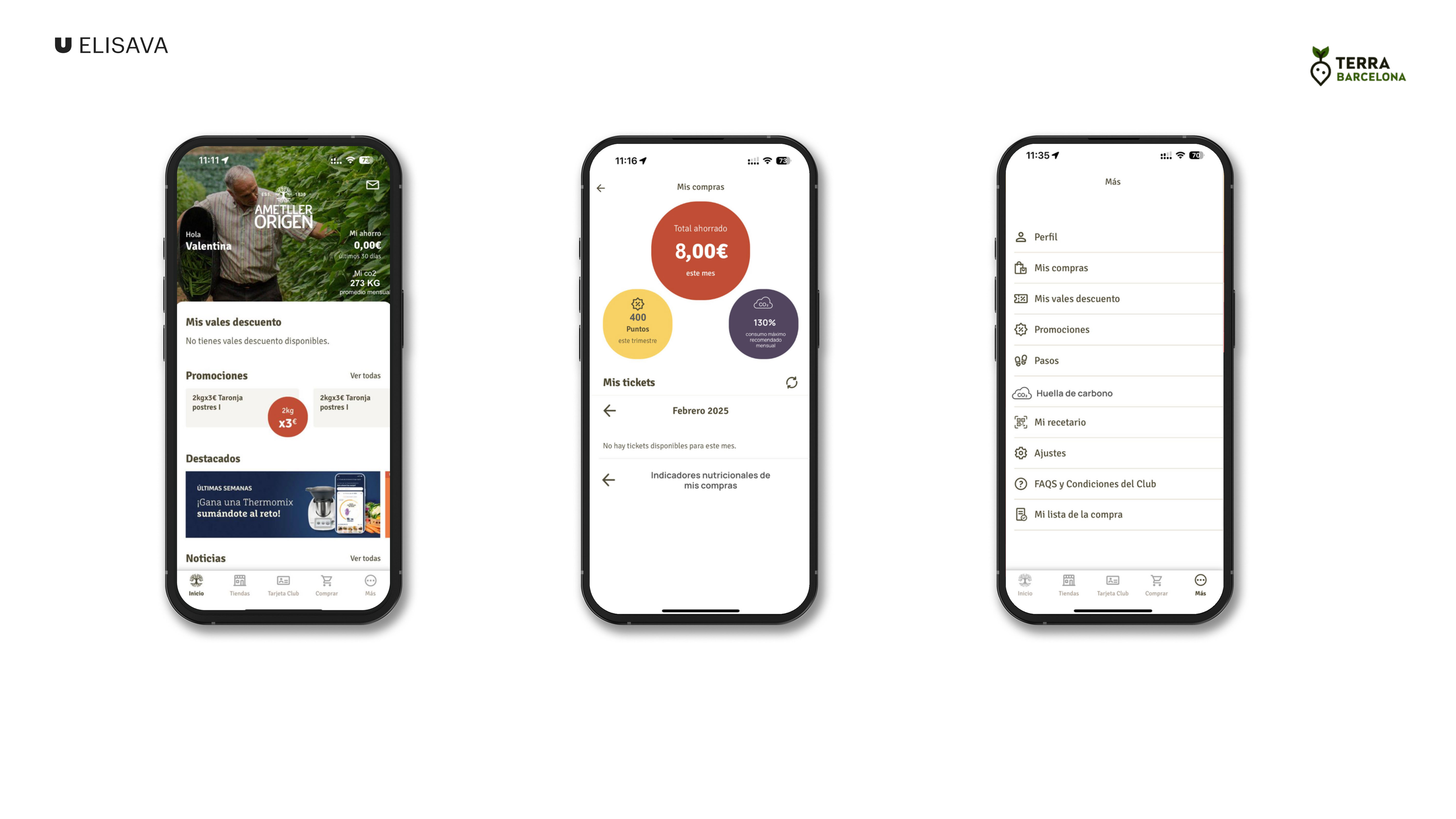
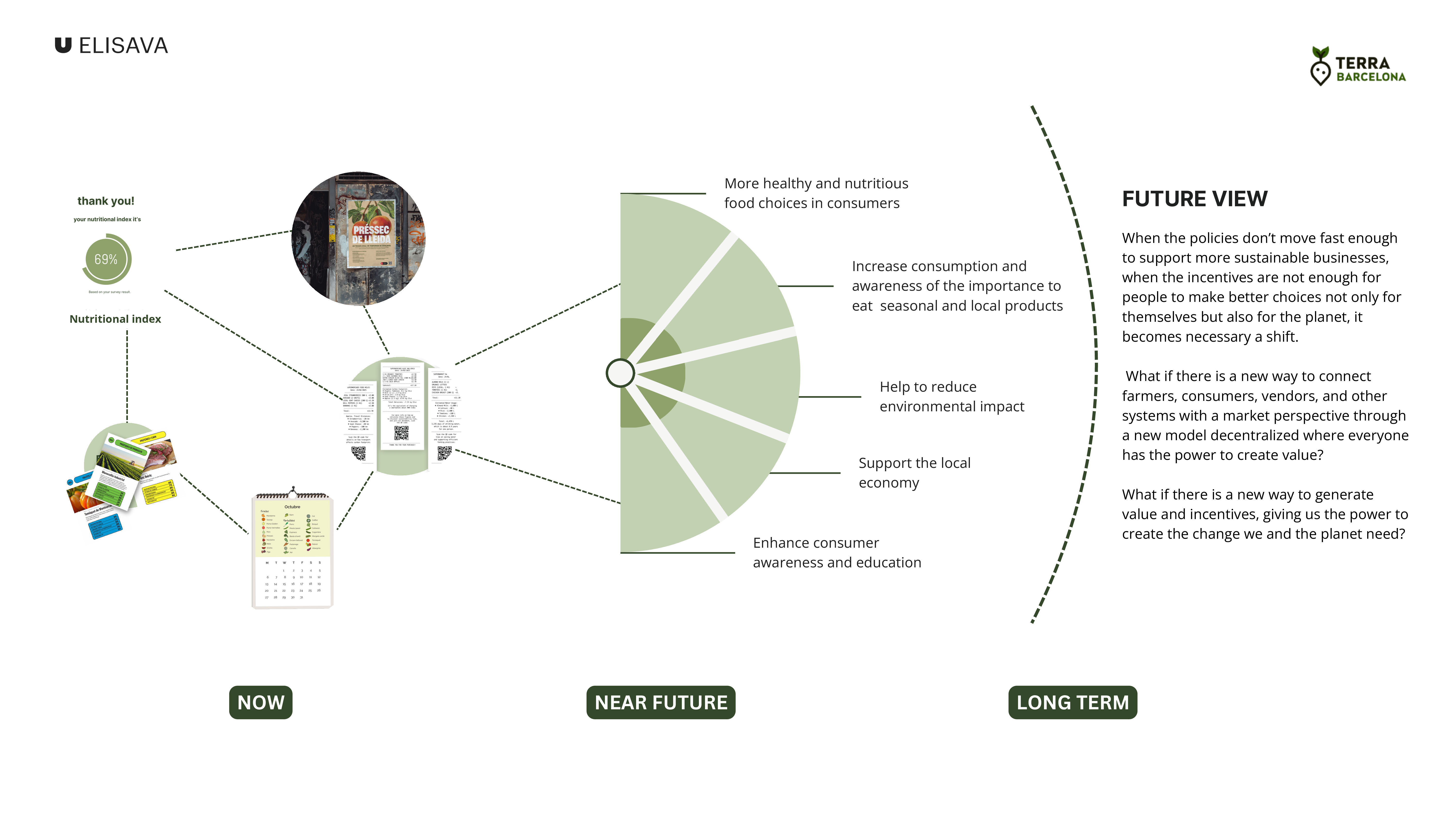
Regen Fund
Climate change and food security are growing global concerns, coinciding with financial challenges faced by younger generations. Rising living costs and uncertain retirement prospects have prompted a search for innovative solutions that address both environmental and economic issues.
The Regen Fund emerges as a response to these interconnected problems. This financial model combines retirement savings with support for sustainable agriculture. It functions by directing investments towards new farmers adopting regenerative practices, aiming to improve soil health and food system resilience.
Participants in the Regen Fund contribute to their retirement savings while simultaneously supporting local agricultural sustainability. The fund creates a link between personal financial planning and ecological stewardship, offering a practical approach to addressing both individual and broader societal needs.
The Regen Fund emerges as a response to these interconnected problems. This financial model combines retirement savings with support for sustainable agriculture. It functions by directing investments towards new farmers adopting regenerative practices, aiming to improve soil health and food system resilience.
Participants in the Regen Fund contribute to their retirement savings while simultaneously supporting local agricultural sustainability. The fund creates a link between personal financial planning and ecological stewardship, offering a practical approach to addressing both individual and broader societal needs.



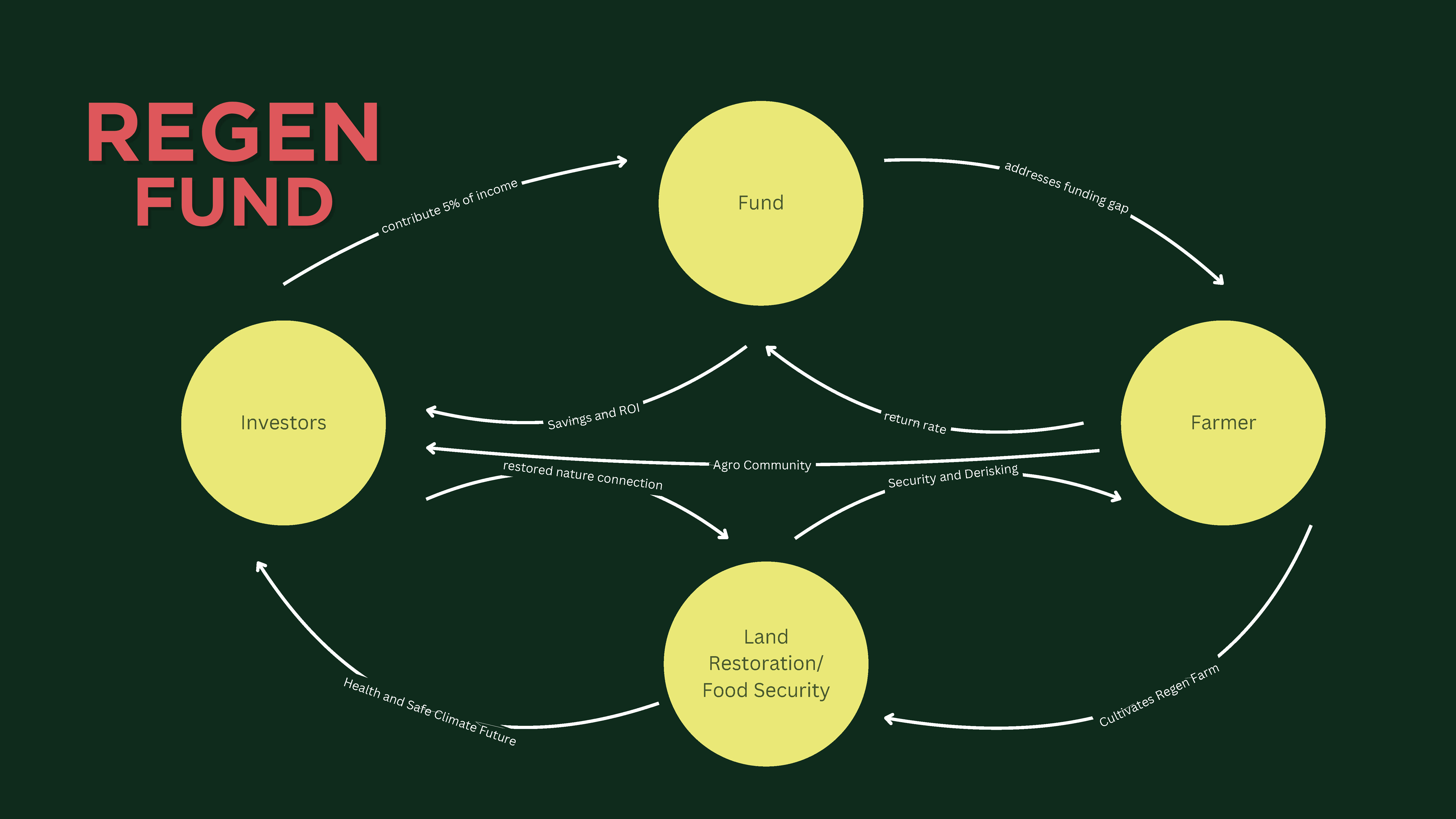


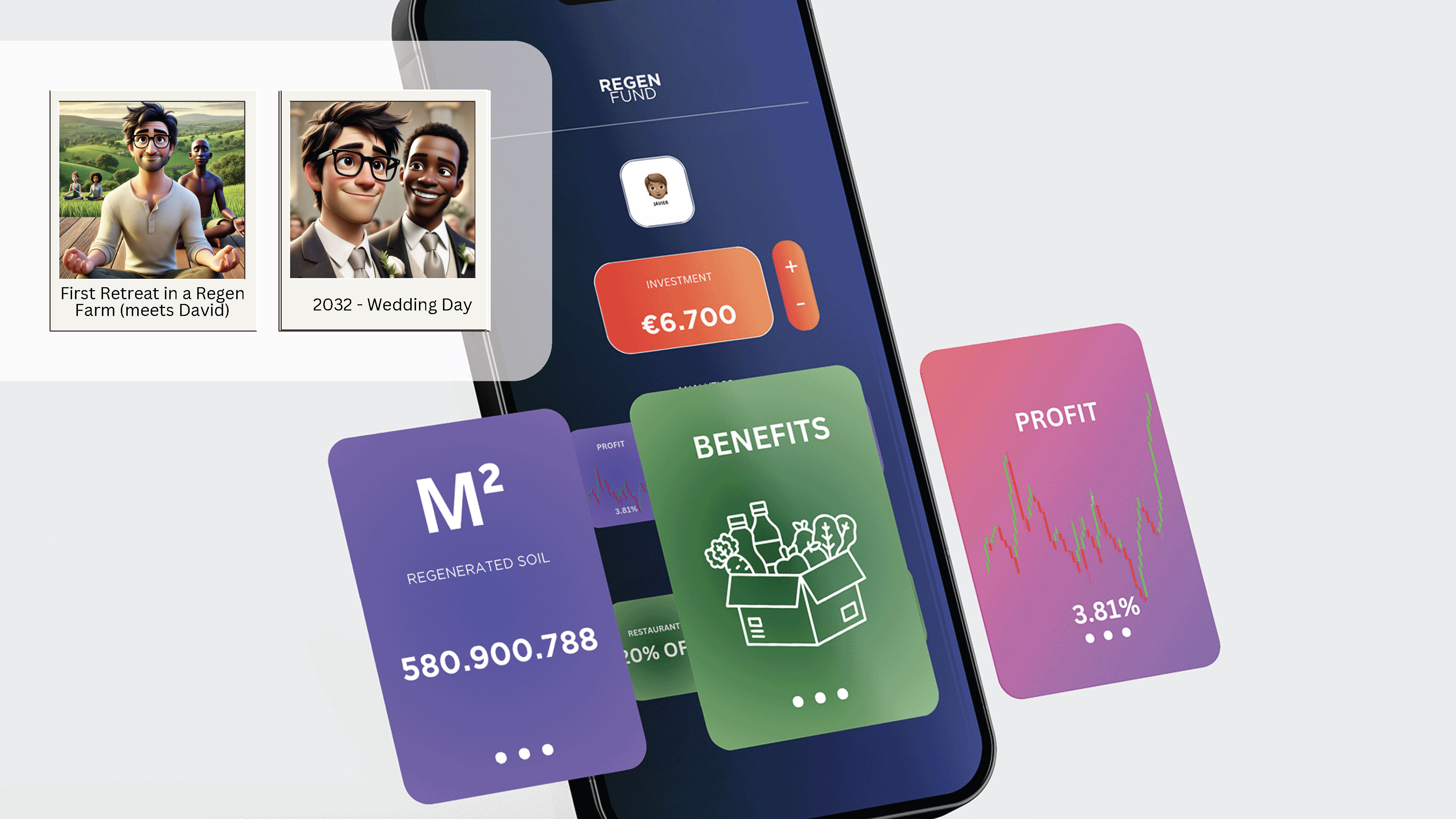
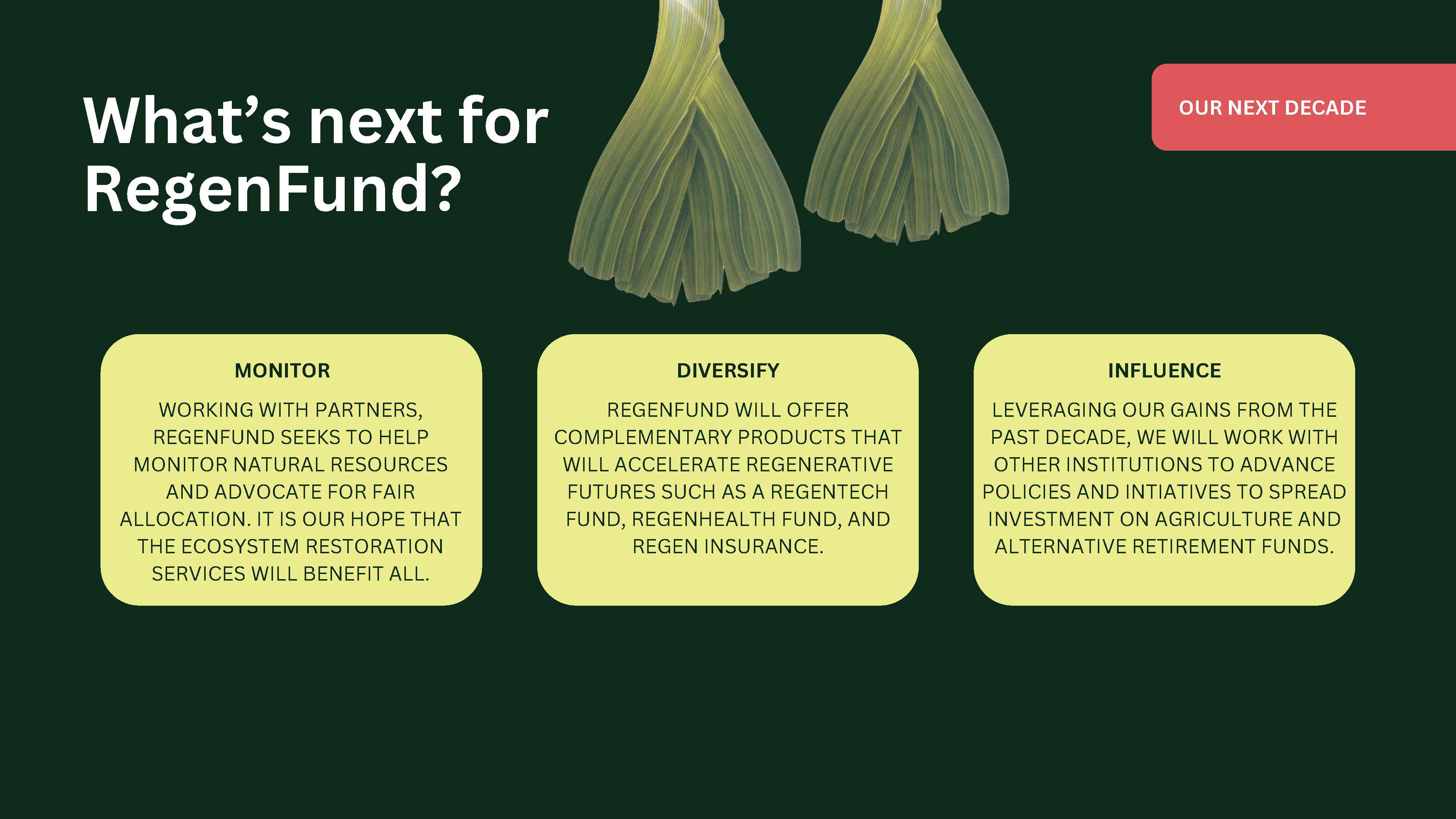
The rise of regenerative agriculture in Barcelona: Strengthening Demand and Supply
This project explores key challenges within the demand-supply chain and identifies opportunities to drive systemic change. Our research highlights a crucial insight: increasing demand for regenerative food can stimulate growth on the supply side. But how can we shift mindsets on a larger scale and create lasting impact?
We have identified three key levers for change: demand, education, and financial support. Strengthening demand—particularly through business-to-business (B2B) and business-to-administration (B2A) collaborations—can encourage more suppliers to transition to purchasing regenerative products. At the same time, education plays a vital role in supporting new farmers—especially those who have not inherited farmland—by providing them with the skills and knowledge needed to enter the field. Finally, financial incentives and support structures are essential to help farmers adopt and sustain regenerative practices.
Our final presentation will explore how these three pillars—demand, education, and financial support—are interconnected and how they can be leveraged to foster a thriving regenerative food system in Catalonia. By working across these areas, we aim to inspire actionable solutions that not only increase demand but also create pathways for new farmers to transition and succeed in regenerative agriculture.
We have identified three key levers for change: demand, education, and financial support. Strengthening demand—particularly through business-to-business (B2B) and business-to-administration (B2A) collaborations—can encourage more suppliers to transition to purchasing regenerative products. At the same time, education plays a vital role in supporting new farmers—especially those who have not inherited farmland—by providing them with the skills and knowledge needed to enter the field. Finally, financial incentives and support structures are essential to help farmers adopt and sustain regenerative practices.
Our final presentation will explore how these three pillars—demand, education, and financial support—are interconnected and how they can be leveraged to foster a thriving regenerative food system in Catalonia. By working across these areas, we aim to inspire actionable solutions that not only increase demand but also create pathways for new farmers to transition and succeed in regenerative agriculture.


Supporting Faculty and Guest Speakers
To support us throughout this studio exploration, we had the honor of engaging with an incredible lineup of practitioners and visionaries who shared their insights, their questions, and their time:
David & Paul (Kaospilot) for introducing the potential of creative leadership.
Nathan Shedroff for demystifying the business of strategic design.
John V. Willshire (The Smithery) for sharpening our understanding of signals and trends research.
Kris de Decker (Low Tech Magazine) and Jere Kuzmanic (UPC) for curating powerful site visits around Barcelona, exploring urban design, water management, history, and land use.
Chris Hepp (Pati Llimona Civic Center) for showing us how urban transformation is possible with passion and purpose, as seen in your incredible rooftop garden and lab.
Luca Vlaskalic (Bioma Community Garden) for championing community urban agriculture and its role in strengthening neighborhoods.
Nyangala Zolho (Innovation Growth Lab) for diving deep into sense-making and power dynamics.
Magdalena Herrador (EIT Food) for guiding us through the foundations of systems thinking.
Oliver Goshey (Regenerative Skills Community & Climate Farmers) for your invaluable perspective on water management and your personal experience in agricultural stewardship.
Francesc Font & Nuri Madeo (Regen Academy & Can Font) for hosting us on your regenerative farm and sharing with us the incredible journey it’s been.
Anna Palli (IRTA) for initiating an urgent conversation about the redesign required for food system transformation.
Prem Krishnamurthy (Department of Transformation) for your thought-provoking 4-day workshop on personal and collective transformation.
Tim Maly (RISD Center for Complexity) for kicking off our exploration of strategic communication with new clarity and purpose.
Simone Uriatt (UNDP) for sharing your journey in design practice and public sector innovation during our first “Pick Your Brain” session.
Villiana Dzhartova (Reimagined Futures) for your inspiring examples of systems mapping.
Alberto Barreiro (VML) for challenging us to rethink through the lens of transformational design.
David & Paul (Kaospilot) for introducing the potential of creative leadership.
Nathan Shedroff for demystifying the business of strategic design.
John V. Willshire (The Smithery) for sharpening our understanding of signals and trends research.
Kris de Decker (Low Tech Magazine) and Jere Kuzmanic (UPC) for curating powerful site visits around Barcelona, exploring urban design, water management, history, and land use.
Chris Hepp (Pati Llimona Civic Center) for showing us how urban transformation is possible with passion and purpose, as seen in your incredible rooftop garden and lab.
Luca Vlaskalic (Bioma Community Garden) for championing community urban agriculture and its role in strengthening neighborhoods.
Nyangala Zolho (Innovation Growth Lab) for diving deep into sense-making and power dynamics.
Magdalena Herrador (EIT Food) for guiding us through the foundations of systems thinking.
Oliver Goshey (Regenerative Skills Community & Climate Farmers) for your invaluable perspective on water management and your personal experience in agricultural stewardship.
Francesc Font & Nuri Madeo (Regen Academy & Can Font) for hosting us on your regenerative farm and sharing with us the incredible journey it’s been.
Anna Palli (IRTA) for initiating an urgent conversation about the redesign required for food system transformation.
Prem Krishnamurthy (Department of Transformation) for your thought-provoking 4-day workshop on personal and collective transformation.
Tim Maly (RISD Center for Complexity) for kicking off our exploration of strategic communication with new clarity and purpose.
Simone Uriatt (UNDP) for sharing your journey in design practice and public sector innovation during our first “Pick Your Brain” session.
Villiana Dzhartova (Reimagined Futures) for your inspiring examples of systems mapping.
Alberto Barreiro (VML) for challenging us to rethink through the lens of transformational design.
References
On Barcelona and Drought
Ajuntament de Barcelona. (2020, January 15). Taking care of water. https://ajuntament.barcelona.cat
Burgen, S. (2023, April). Catalonia’s farmers face threat of drought … and a plague of hungry rabbits. The Guardian. https://www.theguardian.com
Circle of Blue. (n.d.). A decade after Barcelona’s water emergency, drought still stalks Spain. https://www.circleofblue.org
Council of Ministers. (2023, January). The government approves the third cycle hydrological plans to modernize the management of water resources until 2027. https://www.miteco.gob.es
Costa, G. (2023, February). Catalonia further restricts water for agricultural, industrial and urban use. El Periódico. https://www.elperiodico.com
Goshey, O. (n.d.). Drought [Audio podcast series]. In Regenerative Skills Podcast. https://www.regenerativeskills.com
Hedgecoe, G. (2023, April). Climate change: Catalonia in grip of worst drought in decades. BBC News. https://www.bbc.com
Weise, Z., & Zimmermann, A. (2023, April). Europe’s next crisis: Water. Politico. https://www.politico.eu
On Water Systems and Agricultural Practices
Sentek, Z., et al. (n.d.). The hidden crisis in Europe’s groundwater. Under the Surface. Retrieved from https://europeanwaters.eu
Chachra, D. (2023). How infrastructure works [Conference presentation]. The Conference, Malmö, Sweden.
Regeneration Academy. (n.d.). Library. Retrieved from https://regeneration-academy.org
Hagens, N. (Host). (2022, August). Low tech: What, why, and how (with Kris De Decker) [Audio podcast episode]. In The Great Simplification Podcast. https://www.thegreatsimplification.com
De Decker, K. (n.d.). Low-tech magazine. Retrieved from https://lowtechmagazine.com
Hagens, N. (Host). (2024, September 25). Roman Krznaric: History for tomorrow: Uncovering future possibilities from humanity’s past [Audio podcast episode]. In The Great Simplification Podcast. https://www.thegreatsimplification.com
Ma Earth. (2024, April 23). Earth commons: Bioregional financing facilities [Video]. YouTube. https://youtube.com
Ashoka. (n.d.). Bioregional weaving labs. Retrieved from https://ashoka.org
Center for Complexity. (2024). Polycene.design manual. Retrieved from https://polycenesystems.design
Investing in Regenerative Agriculture and Food. (n.d.). Podcast series. Retrieved from https://investinginregenerativeagriculture.com
Firmenich, A. (Host). (n.d.). Lifeworlds [Podcast]. Retrieved from https://lifeworlds.io
Commonland. (n.d.). The 4 returns framework. Retrieved from https://commonland.com
TransCap Initiative. (2024, September 30). Financing the regenerative agriculture transition in the Midwest: A strategic blueprint for capital development. Retrieved from https://transcap.org
Future Observatory. (n.d.). Future Observatory Journal. Retrieved from https://futureobservatory.org
Index